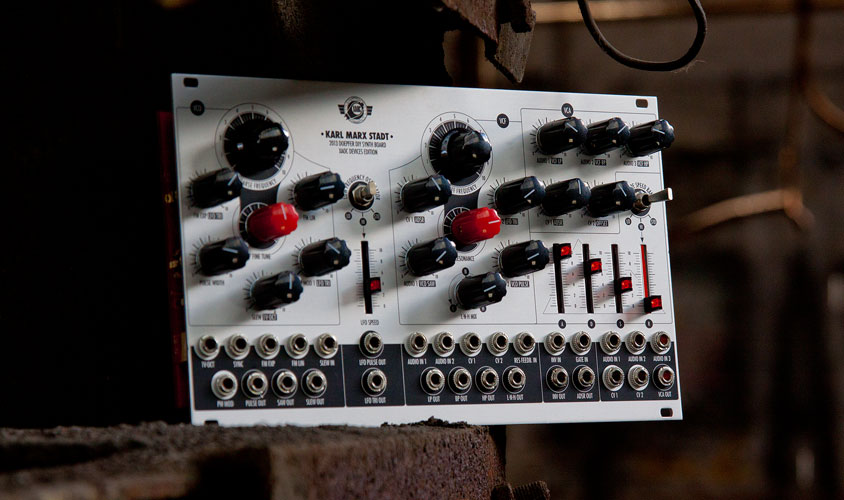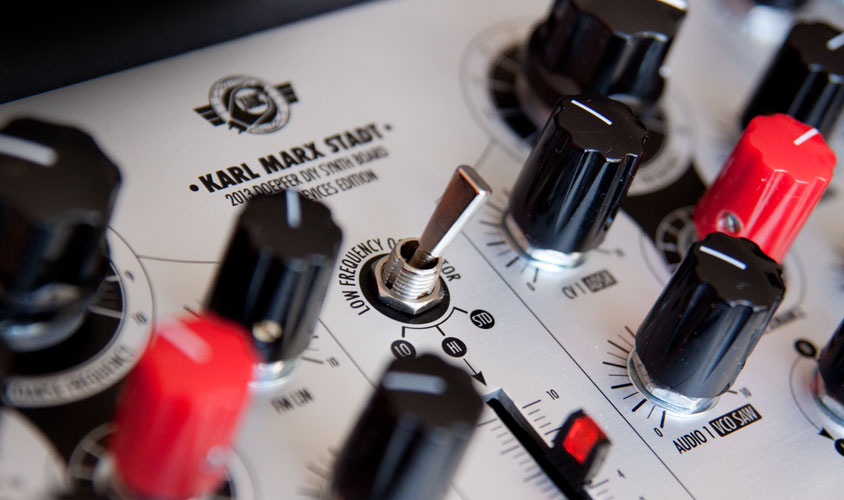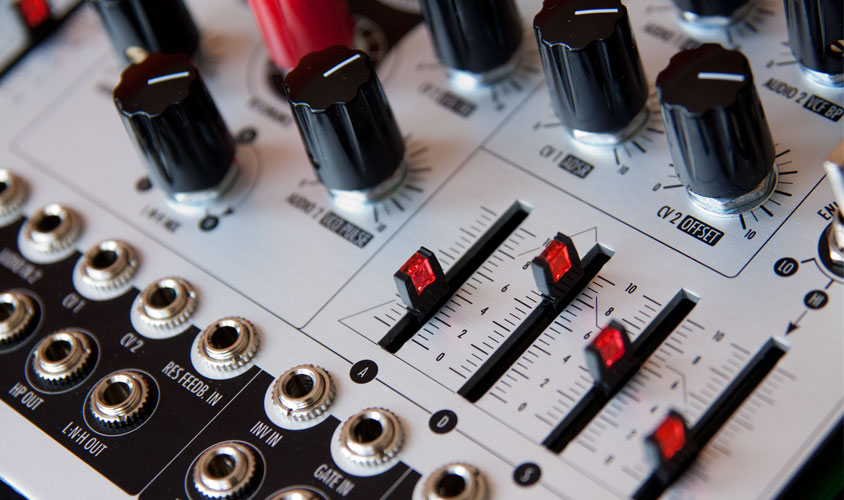„Das Rhythmicon oder Rhytmikon ist ein elektronisches Musikinstrument. Gebaut wurde es 1931 vom russischen Physiker Leon Theremin (eigentlich Lev Sergejewitsch Termen, 1896–1993) auf Anforderung des Komponisten und Theoretikers Henry Cowell.
Das Rhythmicon ist ein Tasteninstrument. Die linke äußere Taste bildet den Grundton zusammen mit dem Grundrhythmus, die weiteren eine Tonfolge, die in Tonhöhe und Rhythmus der Obertonserie des Grundtones entspricht. Die zweite Taste erzeugt also einen doppelt so hohen Ton wie die erste mit doppelt so raschem Rhythmus, die dritte einen Ton dreifacher Frequenz und eine dreifach schnellere Tonfolge usw.
Das Rhythmicon hat 17 Tasten und erzeugt die Töne wie eine Lochsirene mit optischer Abtastung. Zur Erzeugung der Rhythmen durchdringt Licht die Löcher in den rotierenden Scheiben und wird von Fotozellen ausgewertet.
Das Rhythmicon wurde unter anderem in einer Reihe von Filmen der 1950er und 1960er Jahre verwendet, darunter in Dr. Seltsam – oder: Wie ich lernte, die Bombe zu lieben.“
(Wikipedia)
„Demonstration of the third version of Rhythmicom built by Leon Theremin at Moscow State Conservatory in early 1960-s. The first Rhythmicon was developed by Leon Theremin for Henry Cowell in 1932. It was the first rhythm machine ever built.“
https://youtu.be/HkodVcuPVAo
(Direktlink, via BoingBoing)







